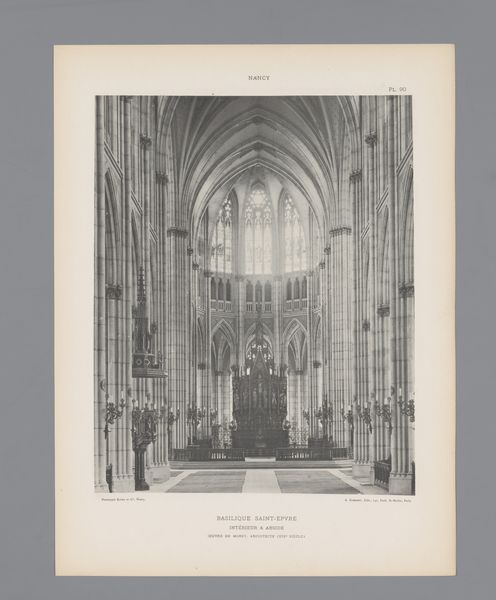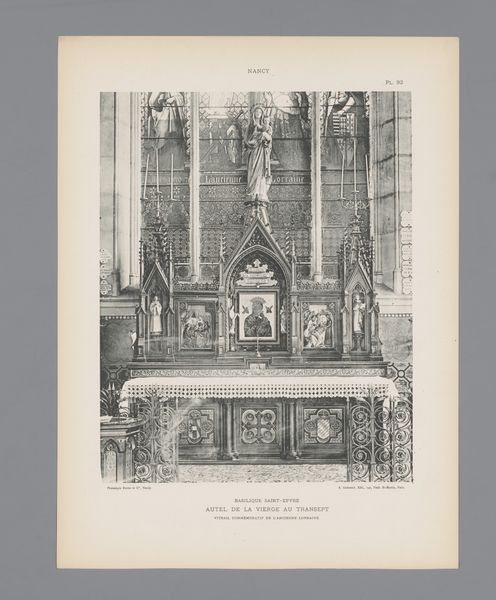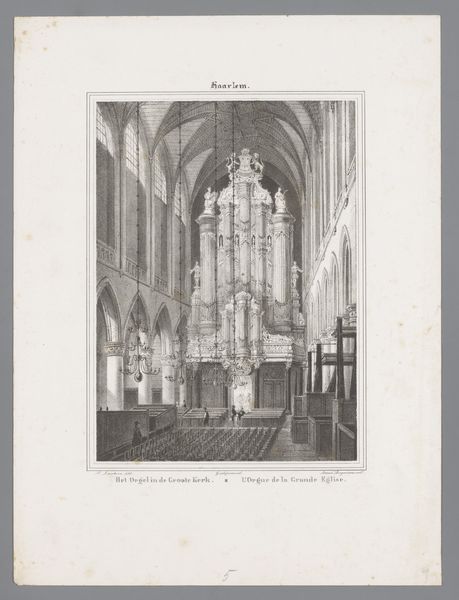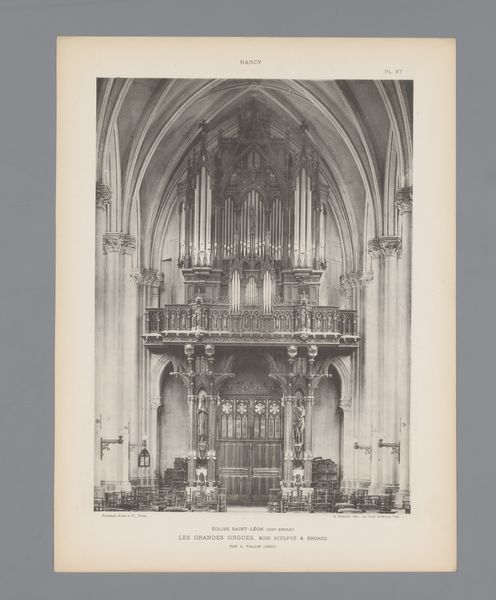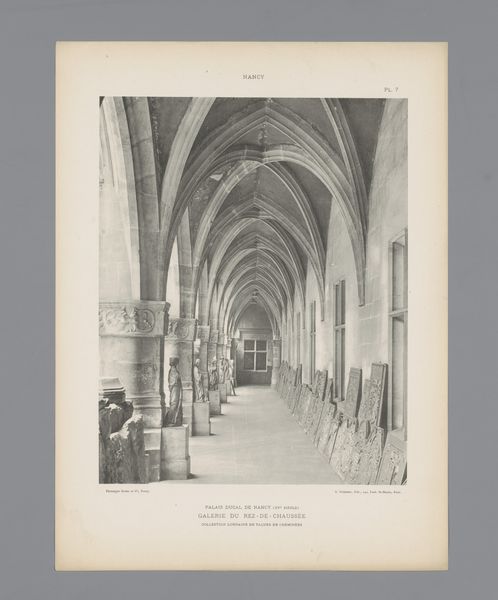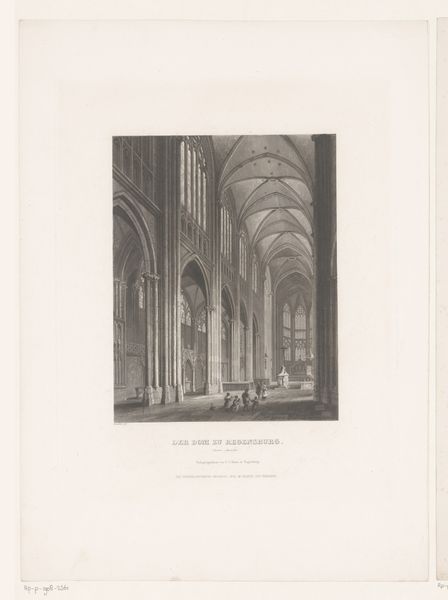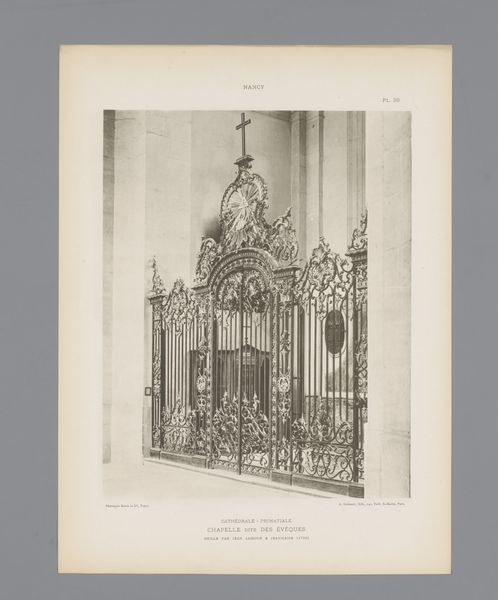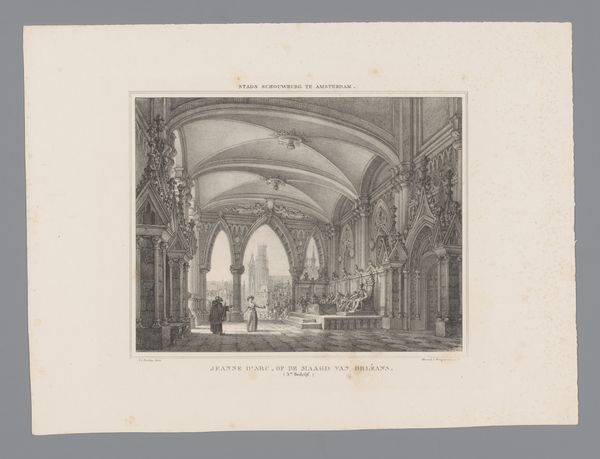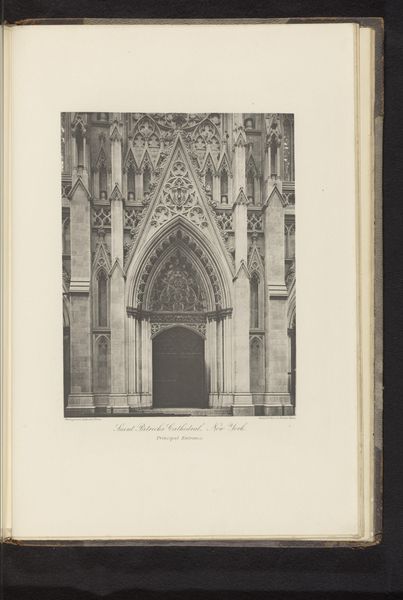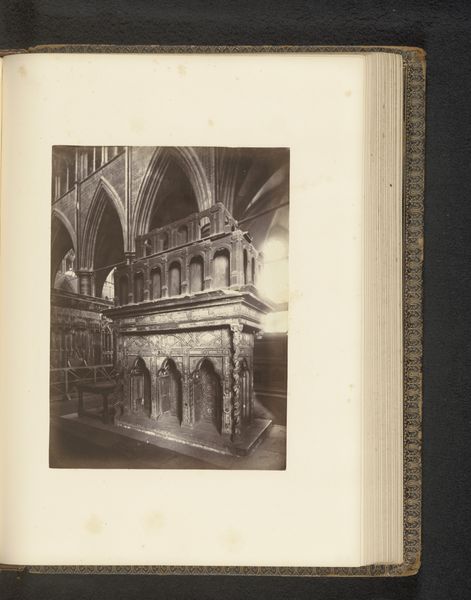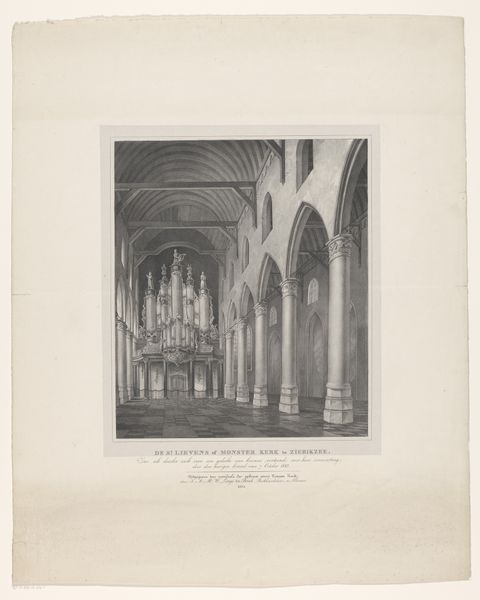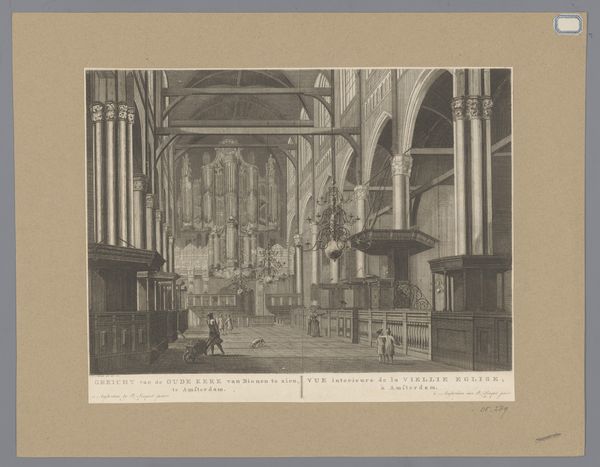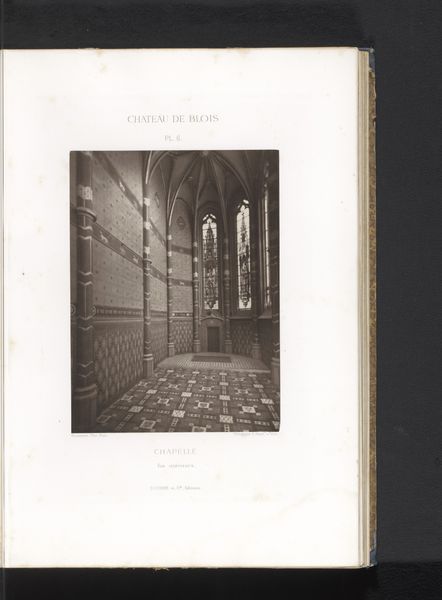
Dimensions: height 401 mm, width 298 mm
Copyright: Rijks Museum: Open Domain
Editor: Here we have an engraving from before 1896, titled "Transept in de Basilique Saint-Epvre te Nancy". The image itself evokes a feeling of reverence, perhaps even awe, given the scale of the architecture depicted. How do you interpret this work, particularly its focus on religious space? Curator: The transept and particularly the rose window are powerful symbols. Rose windows, for example, aren't just architectural details; they're mandalas, cosmograms in glass. Light streams through, fracturing into a spectrum – divinity entering the earthly realm. Consider what that central rosette meant to a largely illiterate population. Editor: That's fascinating, the idea of the rose window as a visual sermon. What other symbolic elements stand out to you? Curator: The geometry itself is key. The pointed arches, the verticality – all reaching towards the heavens, symbolizing aspiration and transcendence. The geometric precision is no accident; it mirrors a belief in divine order and rationality. Also, what emotions do you associate with Gothic architecture? Editor: Probably the pursuit of heaven. The scale and ornamentation, everything is meant to lift your gaze and your spirit. Is that reading too much into it? Curator: Not at all! Gothic architecture served as a tool to communicate religious ideology and power; the scale dwarfed individuals, instilling humility and a sense of insignificance before the divine. This engraving captures not just a building, but a worldview. What would you say that worldview values most? Editor: The image makes me reflect on the visual vocabulary of faith and power. Now, I understand how architectural prints like this one are not just records, but carriers of meaning. Curator: Exactly! By recognizing such architectural representations as more than accurate portrayals, we uncover layers of socio-cultural memory, wouldn’t you agree?
Comments
No comments
Be the first to comment and join the conversation on the ultimate creative platform.
